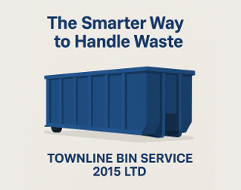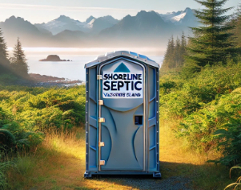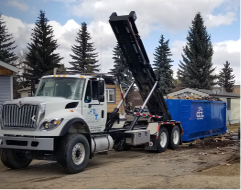Toronto Waste Disposal Challenges
This post would never have been possible without help of Toronto Disposal Bin Rentals, Dumpster Rentals in Toronto and Toronto Waste Disposal Companies.
The State of Michigan had warned Ontario municipalities regarding its planned prohibition of dumping Canadian waste in Michigan’s landfills. Michigan had been a major recipient of Ontario’s refuse and this prompted the former to issue this warning since 2006. These warnings, not to mention problems with finding the right dumping site has led Ontario to look for other feasible ways to dispose of its municipal solid waste other than dumping them into landfills. An intense debate on the safety and feasibility of incineration as a method of waste disposal ensued among Ontario authorities.
Experts on modern incineration processes have recently argued that today’s incineration technologies/facilities like some of the facilities for waste disposal in Toronto, are cleaner, safer, and more efficient vis-à-vis those introduced and operated in the 80s. Moreover, they raised that these modern incinerators have the capacity to generate more energy than its older counterparts. Despite this however, many groups who are advocates of environmental safety and preservation still oppose incineration of waste as they remain sceptical about its effects on the environment and on peoples’ health as well.
With the advent of developments in technology, both the local and provincial governments of Ontario are becoming increasingly aware of the potential of incineration technology as a means of waste disposal management. The Regions of York, Durham, and Halton are coming up with solutions to waste disposal problems and incineration has become one of the popular options. Other regions like City of Hamilton and Niagara have likewise taken similar steps. Pilot projects are being implemented by the Ontario Ministry for the Environment purposely to check the viability of modern incineration technologies. It is also interesting to note that the Toronto garbage disposal system is not lagging behind in the employment of incineration methods.
These initiatives have been undertaken despite the lack of a formidable policy leadership among provincial governments on how to feasibly manage refuse in the entire province. With the seemingly lack of leadership coming from the provincial government and absence of a long-term and sustainable waste management plan, decision-making as well as implementation of action plans towards waste management may not be proactive and could be lacking in cohesiveness.
Despite having existing laws, policies, and guidelines that control certain areas of municipal waste management, the provincial government has been passive about developing a waste management scheme at policy level that would have ensured that waste diversion in the entire Ontario is optimally implemented.
Life cycle studies reveal that waste diversion has very minimal burden to the environment unlike landfilling, incineration, and other means of waste disposal.
However, the absence of an overall plan that will prioritize waste diversion in lieu of the reportedly more burdensome waste disposal methods led some sectors to shun the idea of incineration technologies. They believe that once these methods of disposal have become virtually efficient in managing wastes and that capacity is no longer an issue, Ontario may have very little motivation to reduce waste through waste diversion. The same sector contend that the continued use of incinerators may weaken the waste diversion initiatives of Ontario stating further that incinerators would need a continuous supply of refuse to be able to maximize combustion. The provincial sector should be able to take immediate steps to ascertain that Ontario would not use “technical fix” as reason for resorting to incineration and for eventually dropping its waste diversion projects altogether.
Many European incineration facilities are often referred to as models which can be studied to fully comprehend how waste diversion initiatives can be given due attention in policy making activities. The objective of which is to ensure that incineration or landfilling will only be employed if there are any residual waste after having employed waste diversion methods.
These European models were created to adhere to the concept of a waste hierarchy which evidently prioritizes prevention and reduction of waste. In fact, policies and guidelines have been instituted by the European Community that likewise cover producer responsibility and rules on packaging.
Despite being safe for use in Ontario, the incineration method should nevertheless be resorted to only under these conditions*:
- waste is truly residual;
- waste hierarchy framework (which follows the concept of prevention and reduction of waste) is adhered to; and
- waste diversion as a waste disposal method has been optimally employed.
*Reportedly, these are also being explored in Toronto junk removal and waste management studies.
It cannot yet be ascertained if indeed incineration would turn out as the better technology or alternative for Ontario, but whatever is the turn out, the decision to implement one over the other should be made only if there is an established policy on waste management in the area. Technology should not precede policy when deciding on methods of waste management and control.
Municipalities, along with other concerned key stakeholders must seek direction as well as extensive and formidable waste management scheme along with a regulatory framework. Financial support should also be sought to be able to implement the scheme. After all, these municipalities deserve it.
- Published: 2010-11-27T13:30:23-08:00
- Author: Laura Schmidt, Dumpster Rentals Customer Supp






